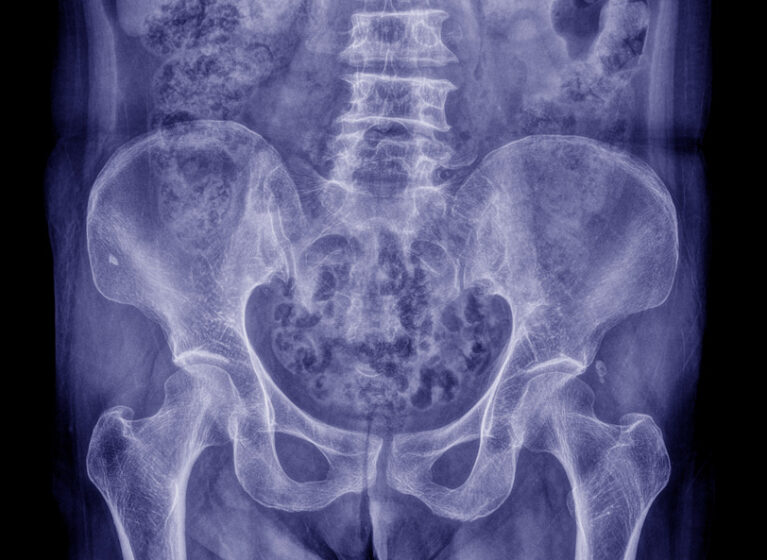
Lower bone mineral density in children with autism spectrum disorder (ASD) puts them at higher risk of bone fracture in childhood. A study by Madhu Misra, MD, pediatric endocrinologist at UVA Health Children’s and Chair of Pediatrics, and her colleague, Ann Neumeyer, MD, at Massachusetts General Hospital showed autistic children had a 3 times greater risk of hip fracture between the ages of 3-22. The researchers are now exploring oxytocin supplementation as an avenue to improve bone mineral density in children with autism.
“Using a large database of ED visits in the U.S., we reported for the first time a significant increase in risk of hip fractures in both children and adults with ASD (male and females). Adult women with ASD also have a higher risk of forearm and spine fractures,” the researchers write.
Understanding the Connection Between ASD & Bone Mineral Density
Lower bone mineral density in autistic children has many causes. These include dietary deficiencies, insufficient bone loading physical activity, and hormonal differences.
There are often dietary differences between neurotypical children and those with autism. “Particularly, the kids who are on the gluten-free dairy-free diets tended to have the lowest bone density in our initial study,” Misra shares.
Dietary restrictions can be due to allergies, sensory avoidance, avoidant restrictive food intake disorder (ARFID), or other issues. Many doctors, including Misra and Neumeyer, have advised supplementing calcium and vitamin D to address this cause. However, this by itself is usually not sufficient to optimize bone health.
A lack of physical activity may also contribute. “Lean muscle mass is an important driver of bone health,” Misra notes. “As is physical activity and the bone loading that occurs with physical activity. Children with autism often have suboptimal bone loading physical activity and lower muscle mass than neurotypical children, and some have hypotonia.”
Also, hormones contribute to bone mass accrual and bone mineral density. “Some studies have suggested that cortisol concentrations may be higher and oxytocin levels lower in kids with autism than in neurotypical controls and both could contribute to low bone density,” Misra says.
Oxytocin’s Contributions to Bone Development
Oxytocin is colloquially known as the “love” hormone, but it contributes to overall health in several ways. One of Misra’s long-time research collaborators, Elizabeth Lawson, MD, has been interested in how oxytocin impacts bone development and health.
“She and I have looked into associations of oxytocin with bone outcomes,” Misra says. “Oxytocin is bone anabolic, meaning that it increases bone formation, and it also reduces bone loss. We have found positive associations between oxytocin and bone density measures in other conditions of low bone density.”
Oxytocin also provides other benefits that may help with bone development. “There are data to suggest that oxytocin can actually increase muscle mass and also reduce cortisol levels,” Misra says. All of this suggests that higher oxytocin concentrations would improve bone health.
She is now leading a research study to examine the impact of nasally administered oxytocin on bone health in young children with autism as a joint endeavor with Massachusetts General Hospital in Boston. This study could have important lifelong implications for those with autism.
Early Intervention May Provide Lasting Benefits
Intervention with oxytocin at young ages will likely provide more lasting benefits, Misra says. “There’s a marked increase in bone mass accrual during the peripubertal years,” she says. “And that trajectory of bone mass accrual during puberty really determines where you get to in terms of your peak bone mass, a key determinant of future bone health.”
Misra’s study thus aims to recruit children between the ages of 6-18, when oxytocin may have the greatest benefit on bone health.
With improved bone density, autistic people may be able to experience fewer fractures, which would improve their life quality substantially.
Overcoming Oxytocin Supplement Pitfalls
Using oxytocin supplementally has been researched for several uses. Many, including its use for pro-social effects, have largely been unsuccessful. However, bone health may be a more promising application for this hormone based on promising data in preclinical studies and some data in older people.
Oxytocin declines with age, and as it does, bone density decreases and fractures increase. Recent studies have tried supplementing oxytocin for people older than 60 and found positive results. Not only did bone density increase, but so did lean muscle mass. These two factors can offer some protection against fractures, and especially hip fractures.
Historically, oxytocin’s short half-life has made supplementation difficult. “We are using a form of oxytocin in this study that has more prolonged effects at the receptor level,” Misra explains.
Simple Intervention to Reduce Fracture Complications
Misra is excited about the life-changing potential this research could have for those with autism.
Bone health implications span a lifetime. Fractures aren’t just painful in the moment, Misra notes. Depending on the site, they can contribute to chronic pain and overall decline in the quality of life. And complications from fracture, while uncommon, can carry significant morbidity and mortality risks.
Misra says, “Our hope is to prevent these complications with a simple intervention early in life.”